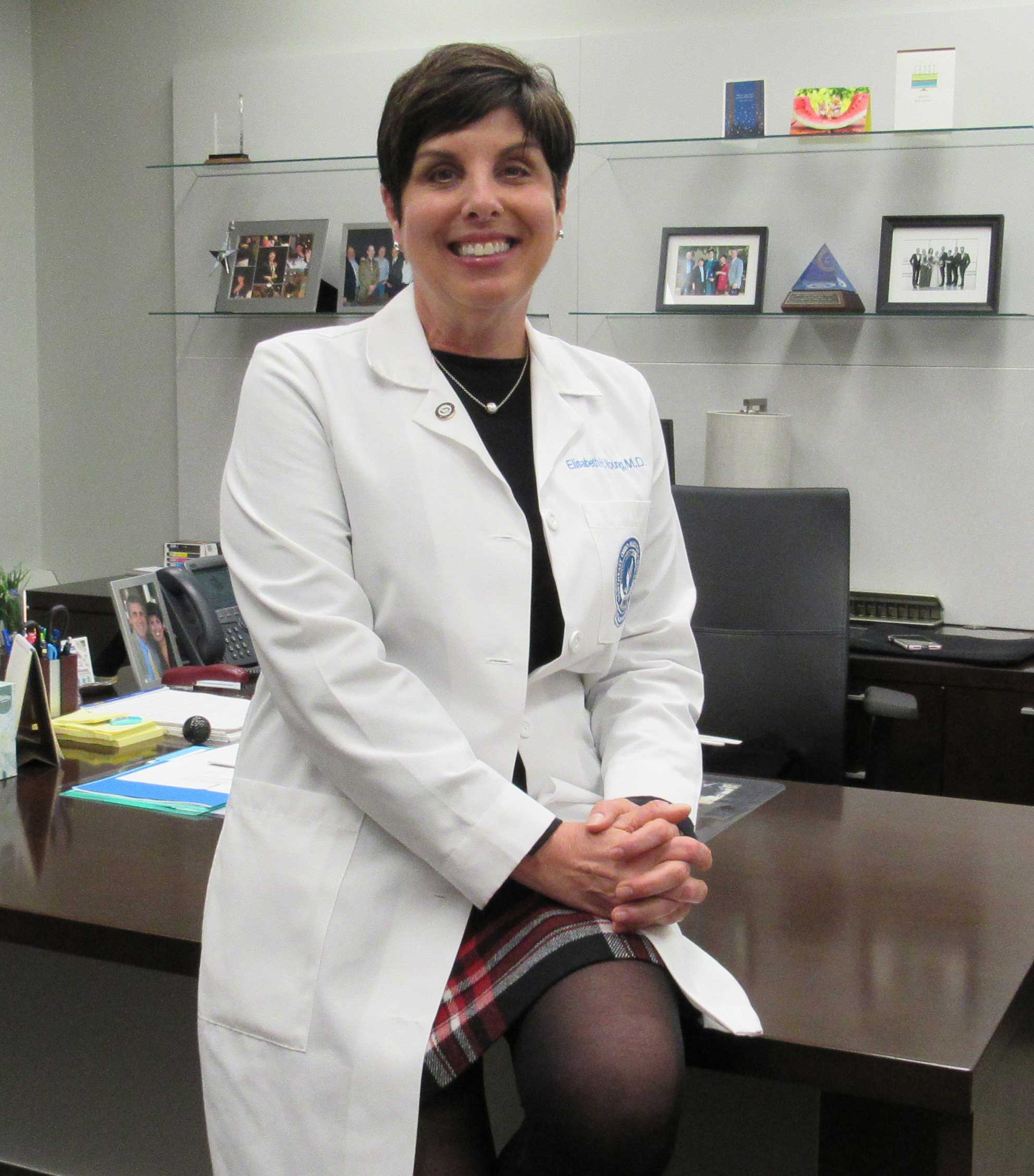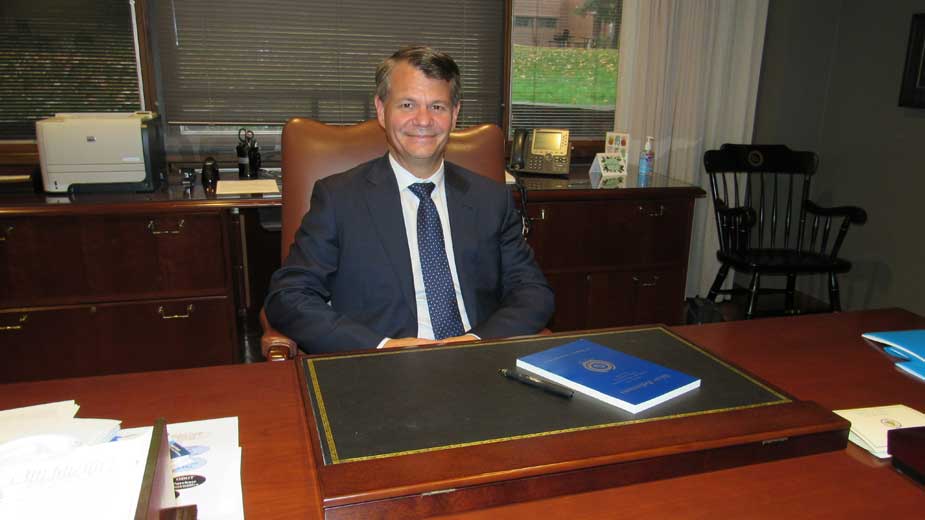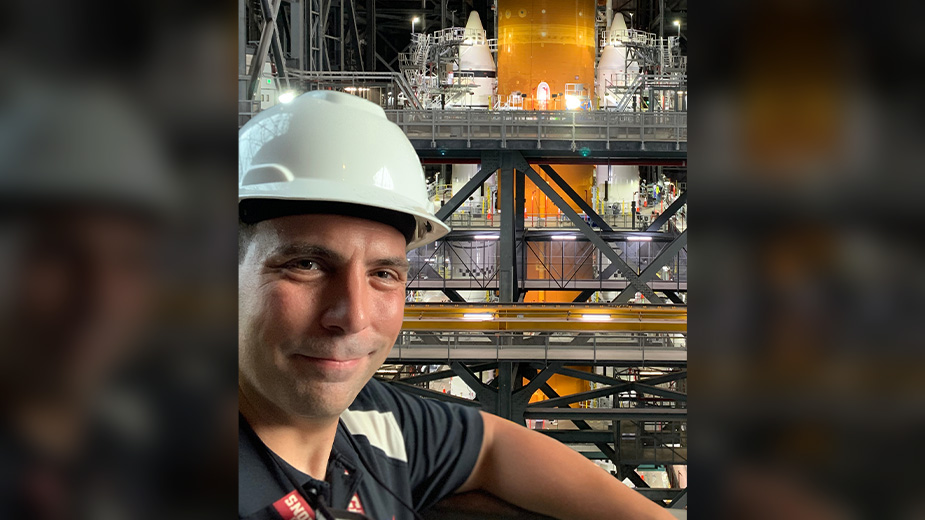NEOMED Trains the Next Generation of Clinicians
By Jeremy Lydic
ROOTSTOWN, Ohio — One month into his presidency at Northeast Ohio Medical University, Dr. John Langell says he’s looking forward to training the next generation of clinicians and teaching them the broader understanding of the health-care ecosystem.
NEOMED is specifically designated to serve the communities of Youngstown, Kent, Akron, Canton, Cleveland and all the areas that fall within that region, and “we have strong partners in every one of those areas,” Langell says.
From health-care systems to Youngstown State University, Langell works closely with those partners to incentivize NEOMED graduates to stay in the region, or return when they leave, he says.
“We have a very high number of our graduates who take on quite important leadership roles around the country, but especially here in the state of Ohio,” he says. “And to give them the tools necessary to be the drivers of change rather than trying to shift around the system that we’re in with practitioners who have already been trained but haven’t had that level of forethought in their education, I think that’s the place where we have the biggest impact.”
Keeping graduates in the northeastern Ohio region is “critically important to us” as the health-care industry anticipates a shortage in primary care physicians, says Dr. Elisabeth Young, vice president for health affairs and dean of the College of Medicine. NEOMED works closely with its partners “to create a stronger primary care workforce,” she says.
Retention also creates a stronger community, as medical school graduates often become leaders in their communities, churches and practices, as well as educational and political institutions, she notes.
In addition to incentives worked out with NEOMED’s partners, Young works at “a grassroots, organic level” to connect with alumni who might be looking for jobs in the community, she says. It’s not unusual for her to get a call from an alumnus finishing a residency elsewhere and wants to return to the area.
“I can easily get them in touch and help them facilitate interviews and get more information,” she says. “In a lot of instances, that’s resulted in offers of employment. And oftentimes, that individual may be married to a health care professional, so maybe they’re coming as well.”

Of the 4,616 NEOMED alumni, 930 graduated from YSU, and 158 currently live and work in the Youngstown area. Another 34 work in the area, but do not live there.
“There are a significant number of them in the community doing primary care,” Young says. “My guess is, if you talk to anyone in Youngstown, they’ve probably encountered a NEOMED physician somewhere in the trajectory of their health care.”
Currently, 959 are enrolled at the university and classes are largely shaped by Ohio residents who choose NEOMED “because our mission resonates with them,” Young says. NEOMED’s mission is to train exemplary physicians to care for patients in the communities of Ohio, both diverse and underserved, she says.
Young has been dean of the college for nearly two years and is the first NEOMED alumna to hold the position. Before that, she practiced rheumatology and palliative care in the Youngstown area, where her husband currently practices, she says.
As the seventh president of NEOMED, Langell brings more than 20 years of higher education experience, including 13 years as vice dean at the University of Utah School of Medicine, as well as founder and executive director of the Center for Medical Innovation. While there, he initiated programs that focused on translational research and commercialization of technologies out of universities as an economic development driver as well as ways to improve health care.
In addition to his surgical residency at Stanford University, he completed a residency in space and aerospace medicine at NASA/University of Texas Medical Branch. As such, technology and innovation is another area where Langell believes NEOMED can make an impact in health care and workforce development.
NEOMED manages the REDIzone – Research, Entrepreneurship, Discovery and Innovation – a separate nonprofit on campus that helps startup companies take new health-care technologies at their earliest stages and provides them the resources to take the tech to market, he says.
“And in doing so, we have economic impact in improving the local economy, creating jobs,” Langell says. “We’re looking to grow that piece, and that’s fulfilling our role in the ecosystem on new product development, new process development to improve outcomes. As an academic institution, we have some unique resources that can help. The key is to create strong partnerships where we do this as an alliance.”
The REDIzone, established in 2013, hosts eight companies in-residence and supports 30 virtual companies. It has logged some 1,200 advisory hours and raised $12 million in client capital.
Along with education and innovation, research at NEOMED also contributes to workforce development, says its chief marketing officer, Roderick Ingram Sr. The research focuses on six key areas: community-based mental health; diabetes, obesity and metabolism; hearing; health and blood vessel disease; musculoskeletal research; and neurodegenerative disease and aging.
“It allows us to get some of the best scientists who want to concentrate on those areas,” Ingram says. “We’re not a large university, so we can’t have dozens or hundreds of research areas. We choose to focus on those, which allows us to be more impactful.”

Currently, neurodegenerative disease and aging research is “heavily funded” at NEOMED, Ingram says, with both state grants and at the federal level. The university partners with other health-care institutions, universities and companies in this research.
For fiscal 2019, NEOMED garnered 107 funding awards for research projects, totaling some $26.9 million, a 63% increase over last year. The medical school just added diabetes/metabolism as a focus area, and one of the researchers in that discipline generated five major National Institutes of Health grants, according to Ingram.
As NEOMED works to develop the region’s clinical workforce, the university also has a responsibility to effect needed change in the health-care industry, Langell says. Through education, Langell wants NEOMED to bring about a shift in the way the health-care industry does things to make care more affordable and accessible.
Central to the issues facing the industry is an unsustainable business model – a reimbursement system based on a combination of billing codes generated by the American Medical Association and the Center for Medicare and Medicaid Services, he says. Codes that also are used by private insurers.
“It incentivizes us in the United States to pay for care delivery – how do we treat people with disease processes currently,” Langell says. “And we’re really good at that. We’re No. 1 in the world at that.”
What the U.S. isn’t good at, he argues, is a cost-effective approach to health care by incentivizing wellness and preventing diseases.
When educating students, the thinking has to be more than just providing excellent care. It must also be about prevention, enhancing wellness and thinking outside of the box when it comes to care delivery so it’s more cost-effective and provides equitable access – concepts that aren’t taught well in medical schools, Langell says.
“In fact, most medical schools do not focus on that at all,” he says. “Understanding the business of medicine is not something that’s taught. And if it is, it gets a very cursory overview.”
Education can have a positive impact in other areas, such as the opioid addiction crisis affecting much of the country, he says.
Already the industry has gone through a “pretty substantial change” since Langell was a resident in general surgery, he says.
“The push we were getting is we weren’t writing enough drugs,” he says. “Pain became that additional vital sign that we measured and we were getting pushed pretty heavily to make sure that we were addressing pain.”
Today, NEOMED researches intervention programs to address opiates and instructs its students in several aspects of pain management, he says.
Such practices include using multimodality therapies that employ behavior change, distraction and other nonpharmaceutical measures “combined with limited narcotics when necessary” and rapidly changing to nonaddictive pain medications, he says.
These programs teach students the “bigger picture and understanding that when we do good, sometimes we do harm,” he says.
Rather than just performing a surgery and prescribing pain medication, students are taught to use interdisciplinary teams, leveraging other providers such as nurses, social workers and home health managers, as well as limiting narcotics.
As for the future, Langell looks to expand the number of incoming students and wants to train them in new aspects of medicine, including digital health care, artificial intelligence and using tools “that have not been available to us in the past,” he says.
“I want them to be the leaders in health care. I want us to be known for that.”
Copyright 2024 The Business Journal, Youngstown, Ohio.


